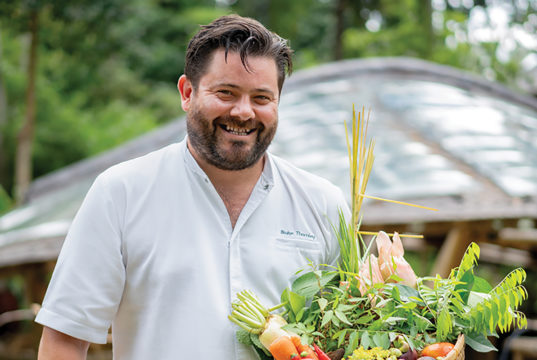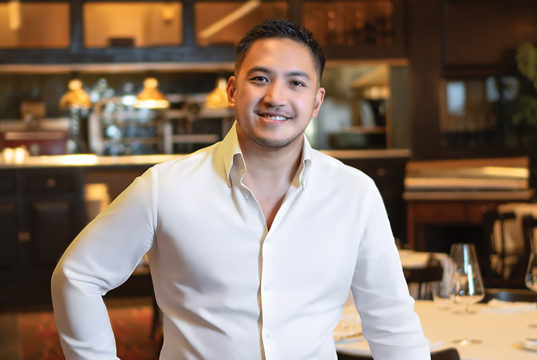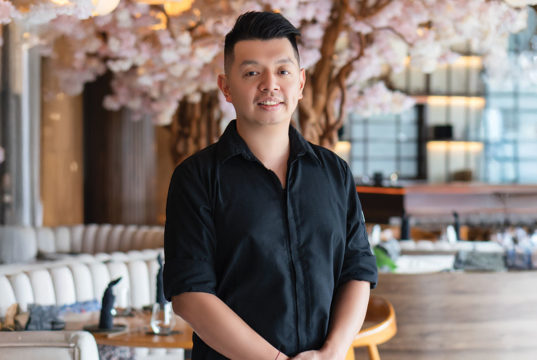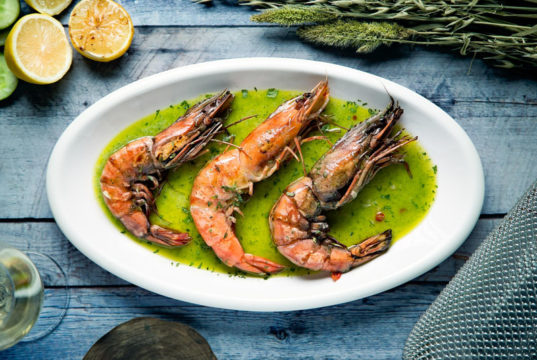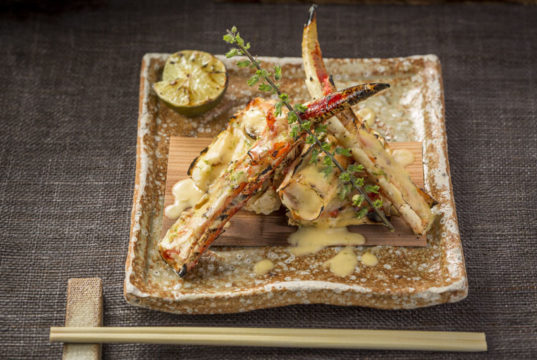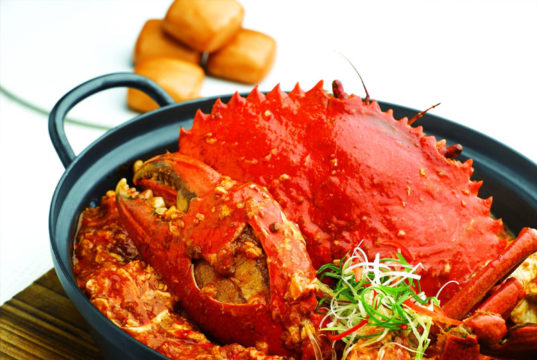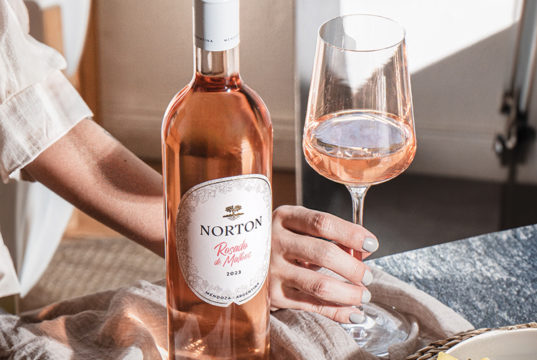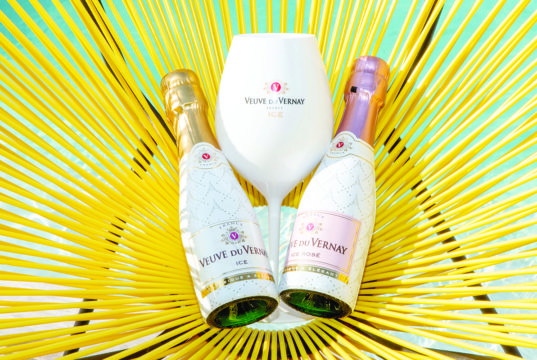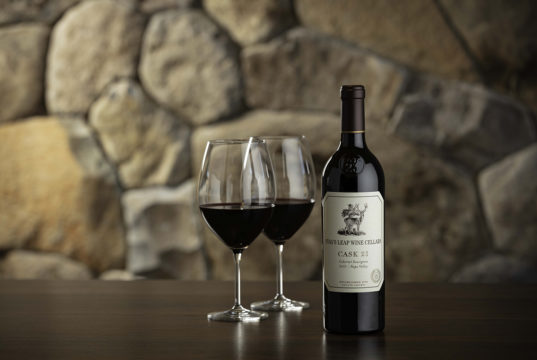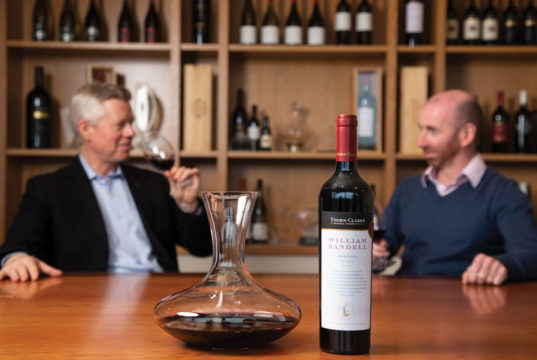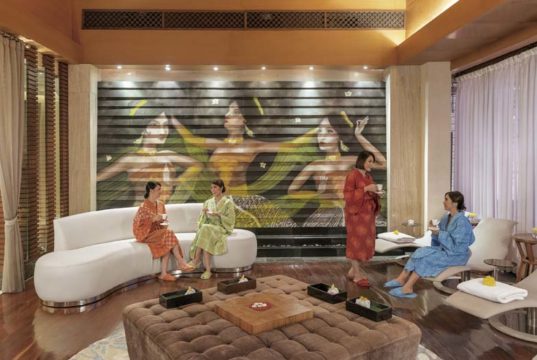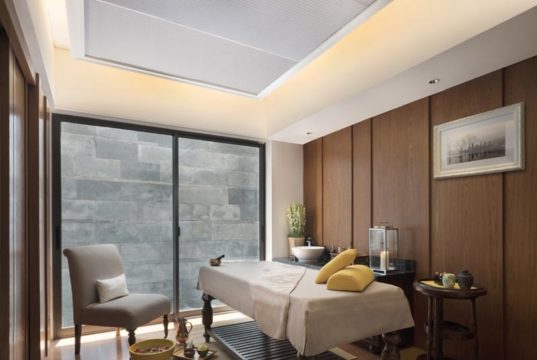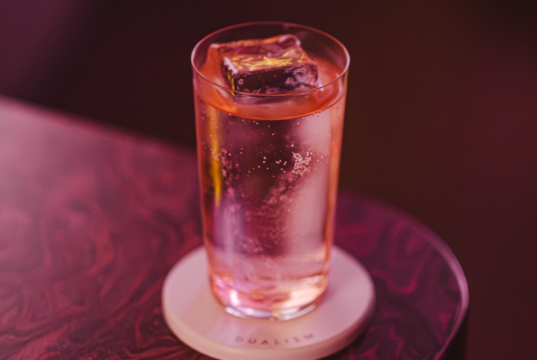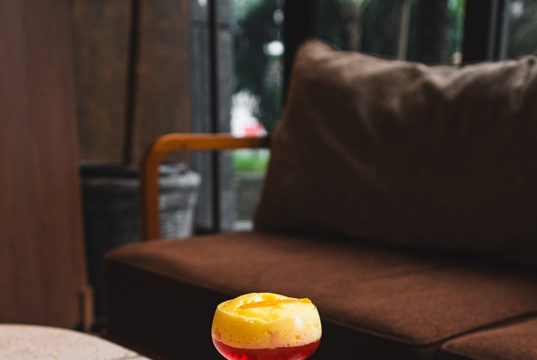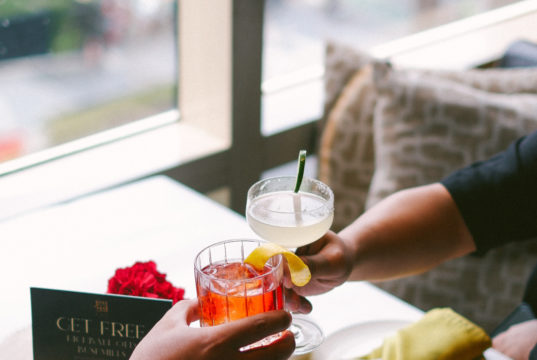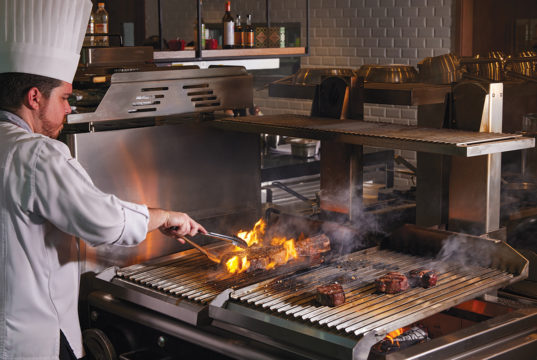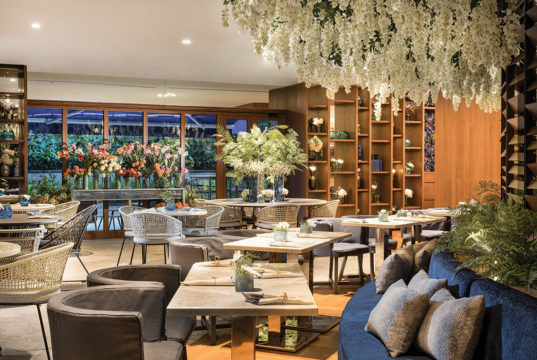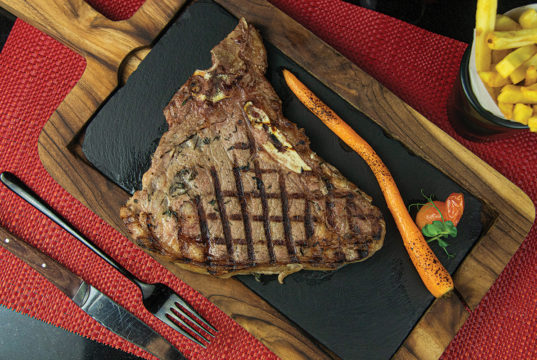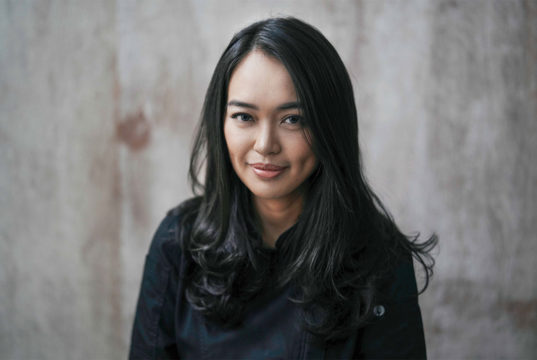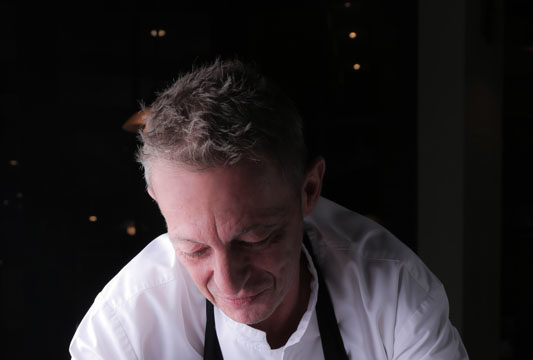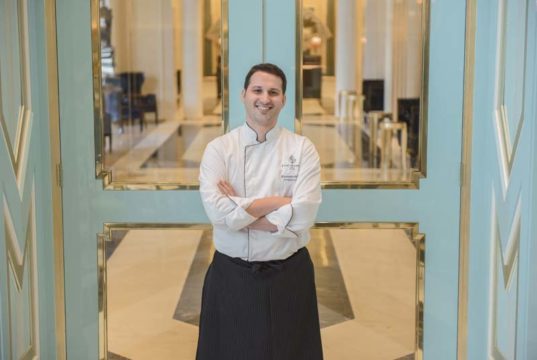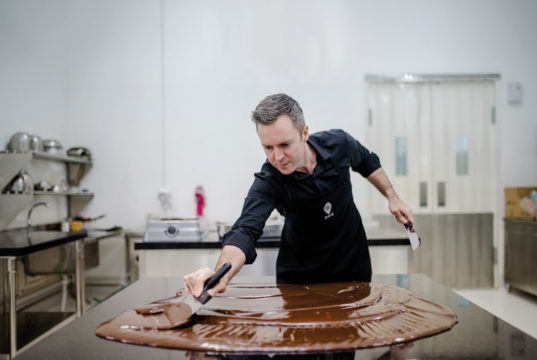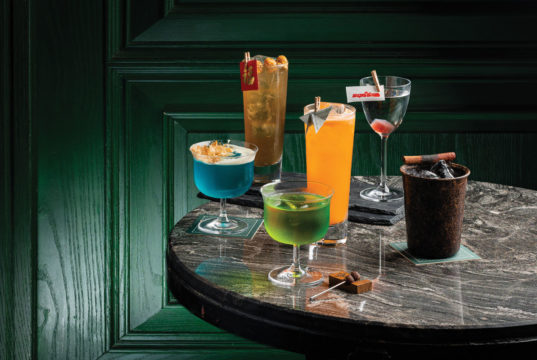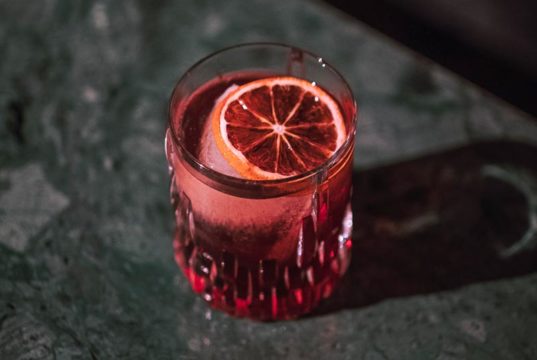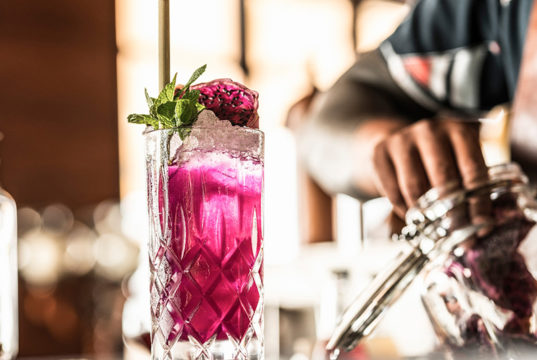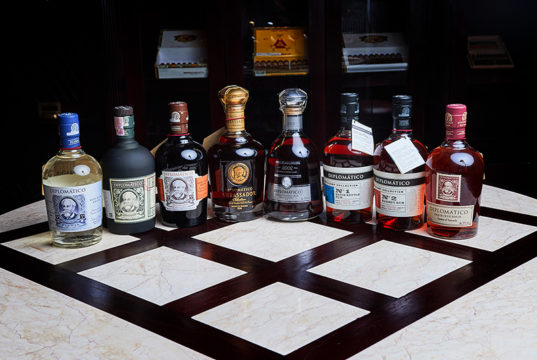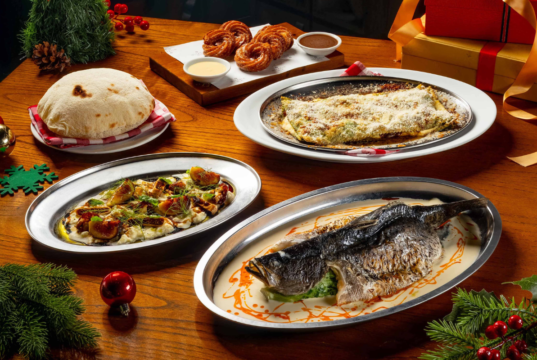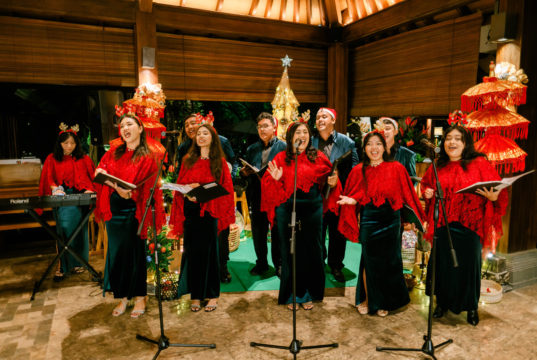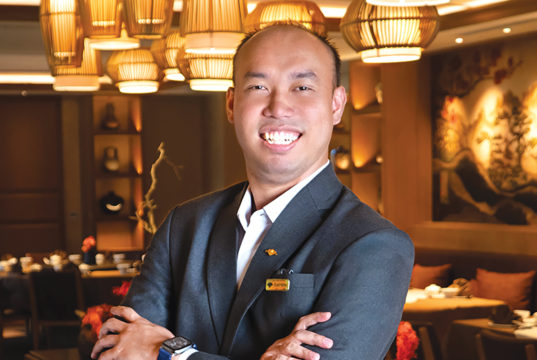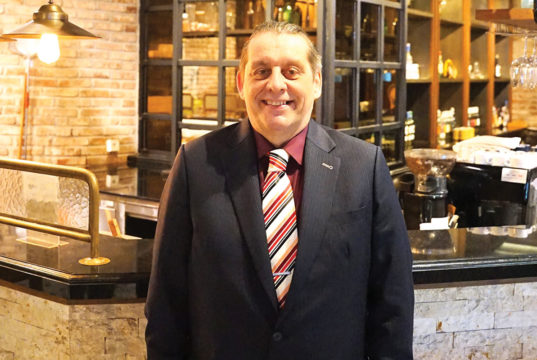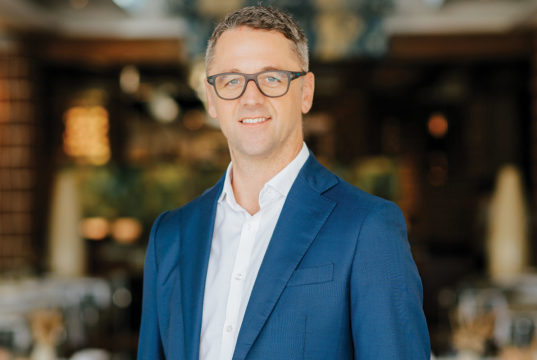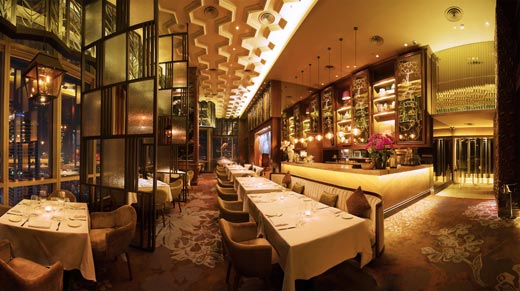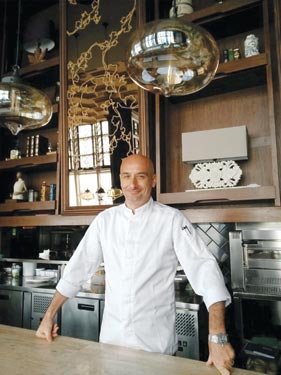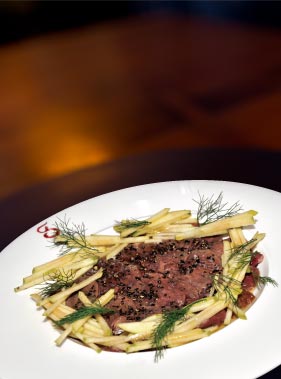Jakarta’s hottest new Italian restaurant, GAIA by OSO, features a menu filled with dishes that combine rustic flavours with modern finesse. The mastermind behind the menu is Chef Diego Chiarini, who is also responsible for the lauded OSO Ristorante in Singapore. We talked to the Italian impresario about his passion for bringing the authentic flavours of his homeland to Asia.
Chef Diego Chiarini is one of the most celebrated Italian chefs in Southeast Asia. After a stint at the Four Seasons Tokyo, he moved to Singapore to set up a burgeoning F&B empire, starting with the much loved OSO Ristorante. Last year he came to Jakarta to open GAIA by OSO, an Italian restaurant that follows in his Singaporean restaurant’s footsteps, offering his take on classic, rustic Italian fare cooked with finesse and a modern touch. We spoke to him when he was in Jakarta, just after charming a crowd of culinary afficionados with an Italian cooking demonstration and just before he headed back to the kitchen to supervise an opulent white truffle dinner for some of GAIA’s most discerning patrons.
Q: Do you remember when you first decided to become a chef?
A: One day, when I was very young, the people at my school asked me what career studies I wanted to focus on. I had no idea, so I asked my father. He said, “You need to find your own way, but I would suggest you do something where you can create instead of just following what others ask you to do. Of course, the school pressured me to give them an answer so I told my father I was interested in three things: men’s tailoring, wood carving and cooking. I was interested in cooking because my uncle owned a hotel in Sicily so I often spent my holidays at his hotel, mostly hanging out in the kitchen, watching the chefs work and eating gelato. So I think that’s where that interest came from. When I told my father about my interests, he said, “Those all sound good, but from my personal experience, having lived through the Second World War, I suggest you try cooking. Worse comes to worse, at least you’ll always have something to eat!”
Q: So where did you get your culinary training?
A: I went to a culinary school in my region of Italy, one of the best in the country with a very good reputation. But to be honest, I wasn’t a very good student. Back in those days, I was a little too wild to take my studies seriously. I was more interested in just enjoying life. It wasn’t until after I had to spend some time in the army that I decided to take my work as a chef much more seriously.
Q: What were some of the first things you learned in the kitchen?
A: My first job in a restaurant was peeling green peas, which was kind of ridiculous. But in terms of important recipes, they start by teaching you how to cook pasta, which is of course one of the most important aspects of Italian cuisine. The timing, if you want it al dente, must be very precise, just a few seconds over can ruin it.
Q: How would you describe your style of cooking?
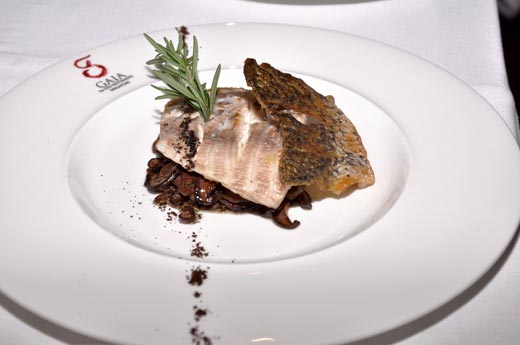
A: I consider myself a freestyle Italian chef. I only really know how to cook Italian food. I’ve found that Italian cuisine has such a huge range of possibilities that you can never truly finish learning new things about it and new things to try. Italian cuisine includes influences from all over the Mediterranean region, from many different cultures. I do like classic cuisine because I am a traditional person but I usually try to put some modern elements into my dishes as well.
Q: Having worked in Asia for many years now, would you say you alter the recipes of your dishes to make them more appealing to the tastes of your customers here?
A: The only real change I make to my dishes to suit Asian palates is in how much salt I use. In Europe, people tend to use a lot of salt. But Asians often find the same amount to be much too salty for them. And in fact, I’ve gotten so used to this that it has become a part of my own personal cooking style. When I’m cooking back home for my mother, she says, “Where’s the salt?” But that’s the only thing that’s changed. The rest is traditional and true to the real flavours of Italy.
Q: You are presiding over a very special white truffle dinner tonight. What kind of work goes into procuring white truffles and how do you handle them as an ingredient?
A: Because the white truffle doesn’t stay fresh for very long and because it is so fragile, you have to have someone actually carry it on the plane with them to make sure it’s okay. The truffle we are using for tonight’s dinner was in Italy just two days ago, so it’s very fresh. You absolutely have to use white truffles while they’re fresh because after four or five days they lose all of their aroma.
White truffles are very delicate but they also have that strong aroma. So you need to find ingredients that are milder and won’t overlap or kill the flavour of the truffle. I think the most approachable way to use it is to combine it with something like cheese, pasta or a risotto with a Parmesan base. Eggs are also very good, as are scallops for the fish course. Veal is good for the meat course because it also has a relatively mild flavour. Ice cream, although unusual, is actually a very interesting way to use truffles. It makes for an amazing end to a meal.
White truffles are too delicate to be cooked, so the best way to use them is to shave a little bit on something that is either quite warm or quite cold. That is all it takes to get the truffle to release its perfume and flavour the dish.
Q: I’ve heard you speak five languages, including pretty good Japanese…
A: Nah, my Japanese is basic at best (laughs). But I speak pretty good French because of my wife, who is French, and because I worked in France for a number of years. I understand Spanish quite well, but my English is not very good. It’s gotten much better though, since I always use it in the kitchen in Singapore and here.
When I first came to Tokyo to work at the Four Seasons, I didn’t speak any English or Japanese, making communication quite difficult. So, as Italians are famous for, I spoke with my hands, at least in the beginning. At the time, I was trying to learn Japanese and English at the same time, so it was hard not to get everything mixed up. But eventually they understood me without all the sign language.
Q: What qualities do you look for when hiring the staff at your restaurants?
A: For my restaurants, I usually like to hire people who have just finished culinary school or haven’t worked in the kitchen at all before. I like it when they don’t have any experience, so that I can teach them my way, the ways I like to work. Most of my staff has stayed with me for many many years. For example, Kenny [Lim], the Executive Chef here at GAIA, was the first employee I hired when I started my restaurant in Singapore 13 years ago. He’s doing a fantastic job running things here. He is very talented and very strict in the kitchen, which is essential.
Q: What do you like to cook for yourself at home?
A: I never cook for myself at home. I do cook by myself at the restaurant sometimes, to try a new recipe or to test something – usually at night, after everyone else has gone home and nobody else is in the kitchen. After the restaurant is closed, I put my music on and I start cooking. Of course it can be tiring. Sometimes it’s five or six in the morning when I realise what time it is, usually when I have a meeting early the next day. Some people like to stay out late at the disco; me, I like to cook in the kitchen until the early hours of the morning.
However, I will say that my preferred dish, when I’m cooking for my friends, is just a very simple spaghetti with tomato and basil. It’s beautiful, with the balance between the acidity of the tomatoes and the saltiness of Parmesan. It may be a very simple dish, but it’s not easy to do right.
Q: What has your experience with GAIA been like it opened last year?
A: I certainly can’t complain with how things are going here so far. We have a fantastic location and the design is simply stunning. I can honestly say it has been a very good experience. I love seeing the happy customers and actually the staff are in a very good mood most of the time too, which is great. I am very optimistic about the restaurant’s future because everybody seems to be smiling in here all the time. The world is becoming a little too grey, so it’s great to be in a place where everybody is bright and cheerful.
Il Filetto di Manzo a Carpaccio Spesso Cotto al Fuoco, Pepe Nero e Mele
(Beef tenderloin in thick “carpaccio” style, cooked open flame, with pepper and apple)
INGREDIENTS:
• 400 gr beef tenderloin
• 40 gr ground black pepper
• 2 onions, sliced
• 2 green apples
• Juice of 1 lemon
• 1 dl extra virgin olive oil
• Sea saltPREPARATION
1. Slice the beef tenderloin thinly with a knife and cover with ground black pepper.
2. Slowly cook the onion with half of the olive oil in a covered pan for 20 minutes until golden.
3. Mix the lemon juice with half of the olive oil.
4. Slice the green apple into rectangular pieces and add the oil and lemon dressing.
5. Put the warm onion at the base of the plate and add the beef on top.
6. Cook the beef over an open fire and place around the apple salad. Season with sea salt.




